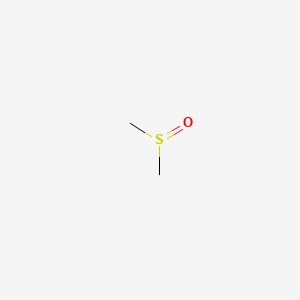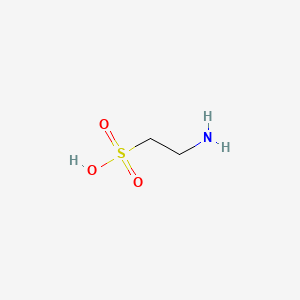Viewing a response to: @mikewick77/sx4vvu
 MSM  DMSO  Taurine Hydrogen Bond Donors and Acceptors: Hydrogen Bond Donors: Molecules or groups that provide a polarized hydrogen atom bonded to a highly electronegative atom, typically nitrogen, oxygen, or fluorine. Hydrogen Bond Acceptors: Electronegative atoms with lone pairs of electrons that can interact with the hydrogen bond donor. Role: Crucial for the structure and function of biomolecules like proteins and DNA, as well as the properties of water. Methyl Donors and Acceptors: Methyl Donors: Compounds that can donate a methyl group (-CH3) to another compound, often in enzyme-catalyzed reactions called methylation. Examples: S-adenosyl-L-methionine (SAM), methanol, and certain forms of tetrahydrofolate. Role: Essential for biological processes like gene regulation, neurotransmitter synthesis, and detoxification. Antioxidants and Reducing Agents: Antioxidant Function: Antioxidants neutralize free radicals by donating electrons or hydrogen atoms, thus protecting cells from damage. Mechanisms: Antioxidants can act through various mechanisms, including: Hydrogen Atom Transfer (HAT): Directly donating a hydrogen atom to a free radical. Single Electron Transfer (SET): Donating an electron to a free radical. Antioxidants, often reducing agents, work through two main mechanisms: Hydrogen Atom Transfer (HAT) and Single Electron Transfer (SET). HAT involves the antioxidant donating a hydrogen atom to a free radical, while SET involves the antioxidant donating a single electron. These mechanisms neutralize free radicals, which are harmful to cells. Antioxidants may play a protective role against prion diseases by reducing oxidative stress, which can contribute to the misfolding of the prion protein. Oxidative stress is a hallmark of neurodegeneration, and in prion diseases, it is linked to the conversion of normal prion protein (PrPC) to the misfolded, infectious form (PrPSc). .. Antioxidants and Methemoglobin Reduction: Antioxidants like glutathione and NADH have been shown to reduce methemoglobin levels in vitro. These antioxidants can donate electrons to the ferric iron in methemoglobin, reducing it back to the ferrous state and allowing it to bind oxygen again. Methylene Blue and Other Treatments: Methylene blue is a commonly used treatment for methemoglobinemia, as it acts as an electron carrier to reduce methemoglobin back to hemoglobin. In addition to methylene blue, other treatments like ascorbic acid and riboflavin have also been used, along with N-acetylcysteine. Methylene blue's dual solubility makes it a versatile compound with applications in various fields, including medicine and biology, where it's used as a dye and therapeutic agent. This lipid and water-soluble nature is key to its ability to cross the blood-brain barrier. NAC lipophilicity (oil/fat solubility): NAC is described as a low lipophilic compound, limiting its ability to easily cross cell membranes. Some derivatives of NAC, like NACET (N-acetylcysteine ethyl ester) and NACA (N-acetylcysteine amide), have been synthesized to improve lipophilicity and cell permeability. Combining ethyl ester, glycerol, and amide suggests a molecule incorporating elements of these structures, likely with lipid-like characteristics. This combination could result in molecules that are soluble in lipids (lipid-soluble or lipophilic) due to the presence of fatty acid chains. Lipids are broadly defined as compounds that are insoluble in water but soluble in organic solvents, such as ether. Methylene Blue Thioninium Thionine Taurine Amine Amino Phenothiazine Chloride (salt) Acetate (Vinegar) Thionine, also known as Lauth's violet, is the salt of a heterocyclic compound. A variety of salts are known including the chloride and acetate. The "ine" ending indicates that the compound is an amine. Amines are organic compounds that contain carbon-nitrogen bonds. Amines are formed when one or more hydrogen atoms in ammonia are replaced by alkyl or aryl groups. The nitrogen atom in an amine possesses a lone pair of electrons. Amines can also exist as hetero cyclic compounds. Aniline (C6H5NH2) is the simplest aromatic amine, consisting of a benzene ring bonded to an amino (–NH2) group. The breakdown of amino acids releases amines, famously in the case of decaying fish which smell of trimethylamine. Many neurotransmitters are amines, including epinephrine, norepinephrine, dopamine, serotonin, and histamine. Protonated amino groups (–NH+3) are the most common positively charged moieties in proteins, specifically in the amino acid lysine. The anionic polymer DNA is typically bound to various amine-rich proteins. The terminal charged primary ammonium on lysine forms salt bridges with carboxylate groups of other amino acids in polypeptides, which is one of the primary influences on the three-dimensional structures of proteins. Taurine is synthesized from cysteine, a sulfur-containing amino acid. Cysteine is a building block of proteins and also plays a role in glutathione synthesis, an important antioxidant. While both are involved in sulfur metabolism and can be found in the body, taurine is not considered a proteinogenic amino acid and has unique physiological functions, including osmoregulation and antioxidant action. Role in nitrogen metabolism: Taurine is involved in various physiological processes, including nitrogen metabolism. Studies in animals have shown that supplementing with taurine can increase nitrogen retention and utilization efficiency. MSM is primarily a sulfur-containing compound and its relevance to nitrogen lies more in its ability to support the synthesis of other molecules that contain nitrogen, such as amino acids like taurine. .. Methylene Blue NAC DMSO Ethyl Ester Glycerol Amide Ether Tryptophan Serotonin Syndrome Water/Oil Soluble Amino Acids Niacin Nitrogen Overdose Symptoms .. Hydrogen Bonding with Fatty Acids: DMSO can form hydrogen bonds with fatty acids, particularly at the carboxylic acid group. No Protection Against Lipid Peroxidation in Some Cases: While DMSO can scavenge •OH, it may not always protect against lipid peroxidation in all systems. For instance, some studies suggest that DMSO might not decrease lipid hydroperoxide yield in concentrations where it scavenges •OH in competition with unsaturated fatty acids, possibly because the resulting methyl radicals (•CH3) can initiate lipid peroxidation if their abstraction of hydrogen from fatty acids is faster than other reactions. DMSO's Hydrogen Atom Transfer Potential: While DMSO is known as an aprotic solvent (generally not donating protons), density-functional theory (DFT) calculations suggest that DMSO can participate in hydrogen atom transfer from alkoxyl radicals via proton-coupled electron transfer. .. Glutamine synthesis involves the incorporation of nitrogen and carbon, with contributions from sugar metabolism. Sugar Metabolism: The process of glycolysis, which breaks down glucose, generates intermediates that can feed into glutamine synthesis. For example, glucose can contribute to the carbon skeleton of the precursors required. glutamine synthesis connects nitrogen and carbon metabolism, allowing for the efficient utilization of these elements for various cellular functions, including biosynthesis and energy production.
| author | mikewick77 |
|---|---|
| permlink | sx4zv8 |
| category | intercellular |
| json_metadata | {"app":"hiveblog/0.1","image":["https://images.hive.blog/DQmfP8RwfoCbDQk3dqWzgqXWCT4bQvpFcWVVpbGc6RUtQBx/imgsrv-50.png","https://images.hive.blog/DQmRjbXT1bL99PZ2bHEsJw2ayg344L3Tu1ZFQ6RLiiT3JxL/Screenshot_20250608-124300_Samsung%20Internet_1.jpg","https://images.hive.blog/DQmQedQWtYmHAvgmuMLQLiNqLyzhED8G8fWNEegGpwVnE2L/imgsrv-51.png"]} |
| created | 2025-05-31 17:42:45 |
| last_update | 2025-06-09 19:02:18 |
| depth | 2 |
| children | 0 |
| last_payout | 2025-06-07 17:42:45 |
| cashout_time | 1969-12-31 23:59:59 |
| total_payout_value | 0.000 HBD |
| curator_payout_value | 0.000 HBD |
| pending_payout_value | 0.000 HBD |
| promoted | 0.000 HBD |
| body_length | 7,769 |
| author_reputation | 545,063,717,246 |
| root_title | "Intercellular Homeostasis" |
| beneficiaries | [] |
| max_accepted_payout | 1,000,000.000 HBD |
| percent_hbd | 10,000 |
| post_id | 143,084,198 |
| net_rshares | 0 |
 hiveblocks
hiveblocks